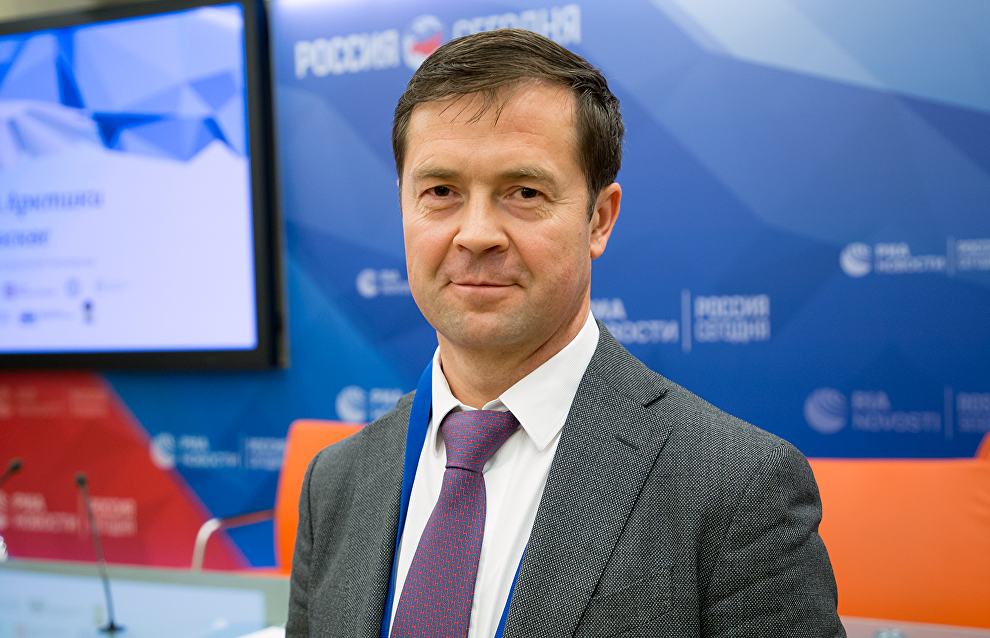Denis Ilatovsky: Soon it will be possible to wear white shirts at local coal ports
Denis Ilatovsky, the Siberian Coal Energy Company's Deputy General Director and Logistics Director, also chairs the Murmansk Commercial Seaport's Board of Directors.
Mr. Ilatovsky, you have a huge amount of work on your hands. You hold responsible positions, serving as the Siberian Coal Energy Company's Deputy General Director and Logistics Director and also heading the Murmansk Commercial Seaport's Board of Directors. How do you manage to accomplish everything at once?
This is not so hard, as it may seem at first glance. Skilled port managers accomplish almost all tasks. But we have to coordinate corporate operations at industry and federal levels, addressing environmental and pricing matters, as well as anti-monopoly regulation. It is also necessary to resolve numerous strategic long-term issues in the federal context. This does not mean that we substitute managers and meddle in routine affairs, but we need a symbiosis together with a balance.
How much coal do our ports export each year?
We annually export 150 million metric tons of coal, as well as 350 million metric tons of oil and petroleum. Coal delivery rates increase faster than those of oil and petroleum. We have a high-capacity pipeline and seaport infrastructure; therefore oil and gas remain our most popular export commodities.
The Siberian Coal Energy Company has its main production assets in Kuzbass and Khakasia which are located far away from the Russian Arctic. What are your interests along the Northern Sea Route?
We seldom transport anything via theNorthern Sea Route, and we are more interested in the Murmansk seaport, the only ice-free port in northwestern Russia. All Baltic ports usually freeze during the winter months, and you need icebreakers to operate in them. Murmansk does not need any icebreakers all year round. It costs much less to deliver freight from the Murmansk Commercial Seaport to European markets, not to mention the Mediterranean markets. For example, it costs more to charter a ship with one and the same cargo-carrying capacity from Baltic seaports to the South Mediterranean region, because this route is longer, and because it takes more time to navigate the Danish straits.
What do you expect from this forum?
We wanted to discuss industry developments, including the compilation of regulatory documents and environmental matters. We wanted to say that Russia's stevedores implement substantial investment projects and deal with this matter in a conscientious and responsible way. We consider this important because media speculations of pseudo-ecologists give the impression that Russian stevedores do not address this subject seriously enough, and that various measures do not yield the desired effect. In reality, the results are here for everyone to see, with toxic emissions plunging eight-fold to ten-fold.
We need objective systems for evaluating the performance of stevedores. We involve a Japanese institute, the Russian Academy of Sciences and Switzerland's SGC Co., as well as certification experts from the Clean Port Environmental Standard, in our work because scientists with various backgrounds and from a whole range of countries recheck our objective data, and we can therefore safely say that we have not exceeded maximum permissible levels over the past two years.
In May 2018, President Vladimir Putin instructed the concerned officials to expand transshipment volumes at local seaports. How can this be accomplished?
We need this to boost exports and GDP investment volumes. Russia boasts a tremendous transport and transit potential that remains to be tapped completely. The capacity of our ports remains low compared to the volume of local resources, and transshipment rates therefore remain high. Additional facilities will reduce such prices, making it possible to meet export demand. Today, we are unable to export some consignments because of the rudimentary railway and seaport infrastructure. However, its expansion will make it possible to further unlock the export potential of Russian regions, including Arctic territories.
The infrastructure of some ports leaves a lot to be desired. How can we accomplish this job?
This is not as difficult as it may seem. Today, we are beginning to handle Russian goods via local ports, rather than those in neighboring countries. The Ust-Luga and Taman ports have been built; but the latter facility does not operate to full capacity so far. Port facilities in European Russia will make it possible to handle extra freight which is currently delivered to neighboring countries. Therefore transshipment volumes will soar by 20-40 million metric tons. So far, it is impossible to handle various consignments via convenient routes. We are posting high market demand, consignments and export markets are available, and all ports should therefore be built with the support of state and private businesses.
You mentioned that Russian ports would change beyond recognition in a matter of several years. What will happen to them?
In the next two-three years, virtually all major coal ports will introduce the best available technology at their respective production facilities and will become much cleaner and much more attractive in terms of environmental-safety and work-safety standards. In fact, it is going to be impossible to recognize them. Today, it is absolutely impossible to imagine people in white shirts visiting some ports. But I am confident that we will organize guided tours for people clad in white shirts and gowns and without sterile shoe covering. This is likely to take place two-three years from now.
